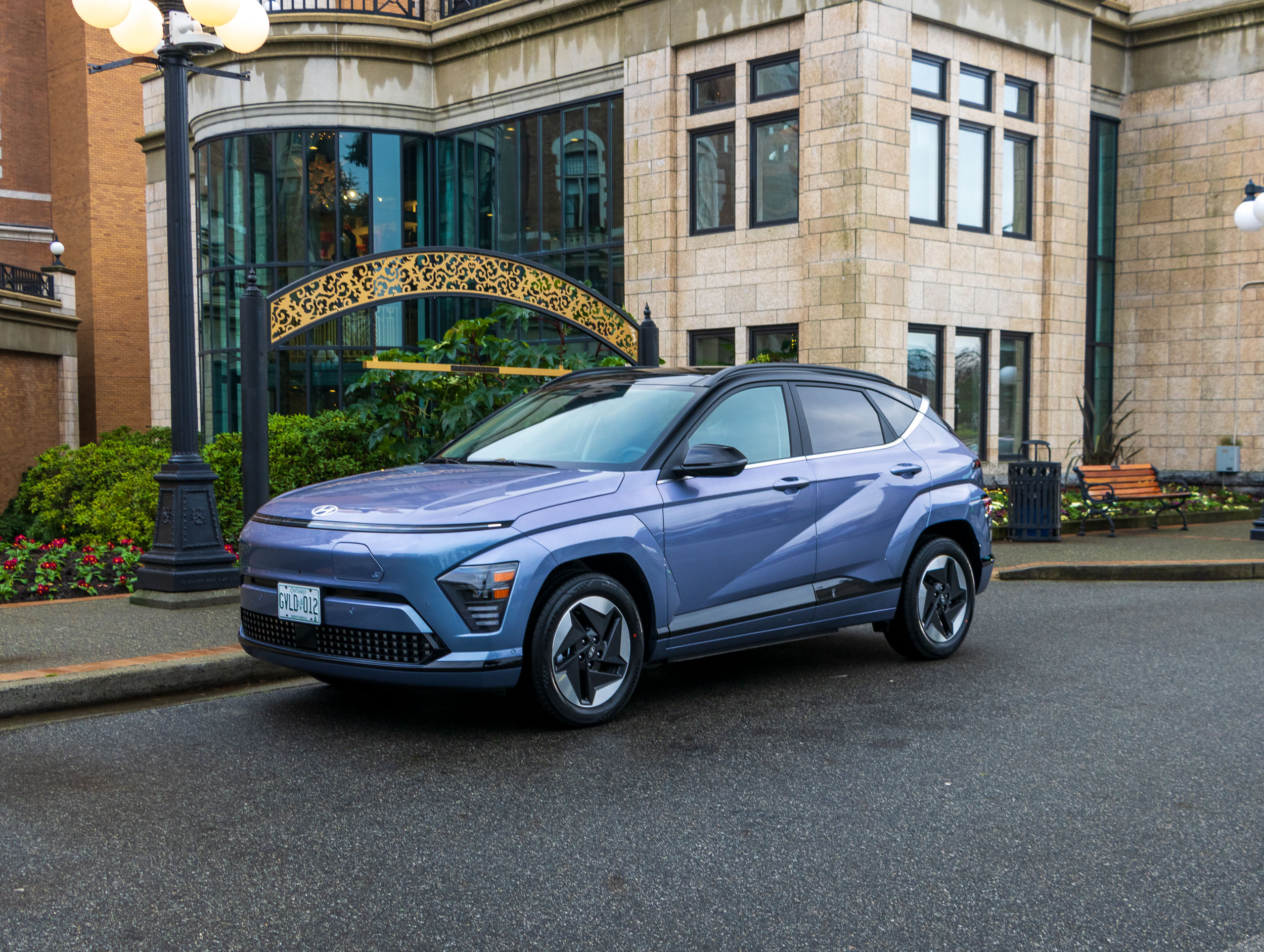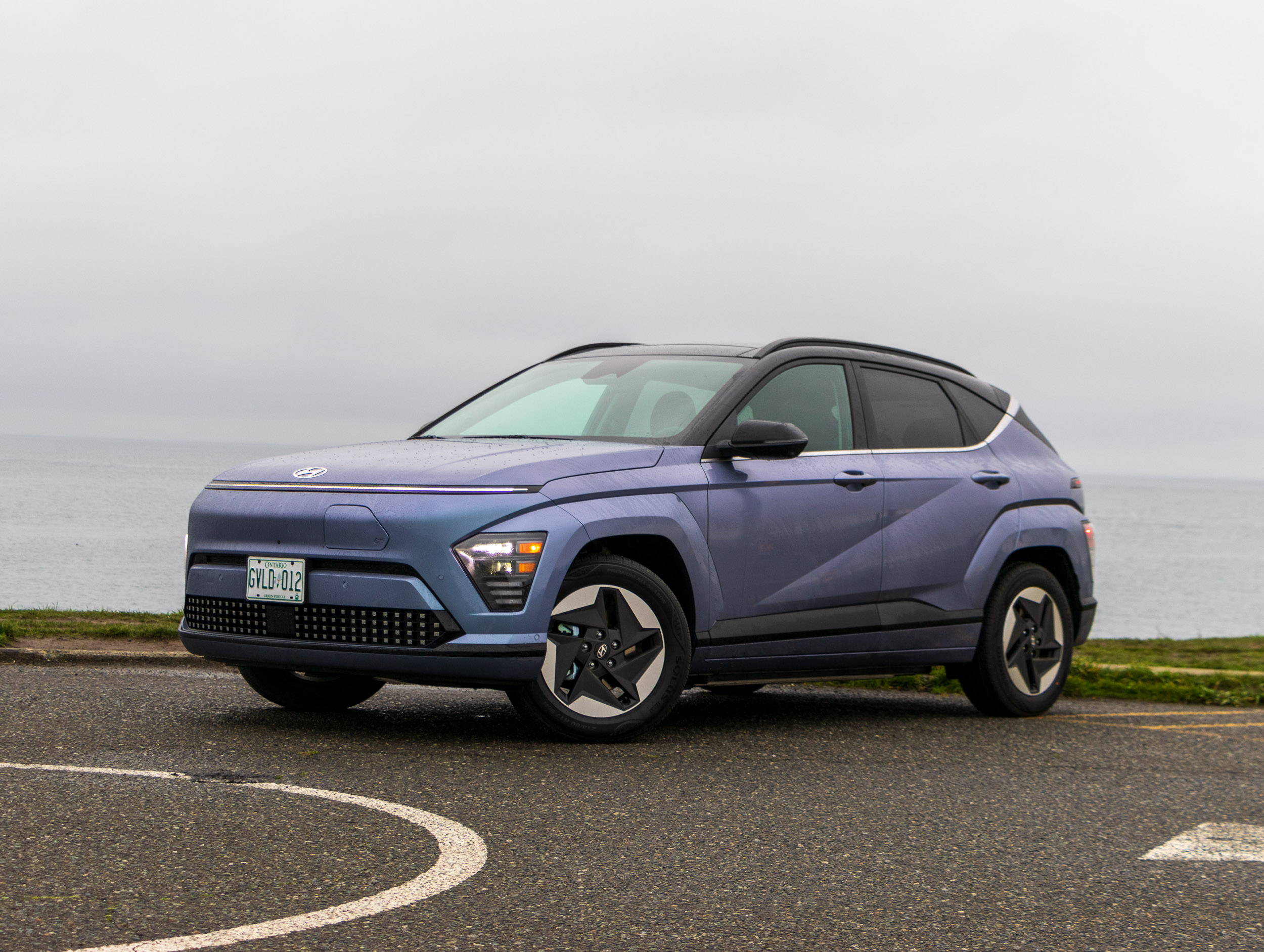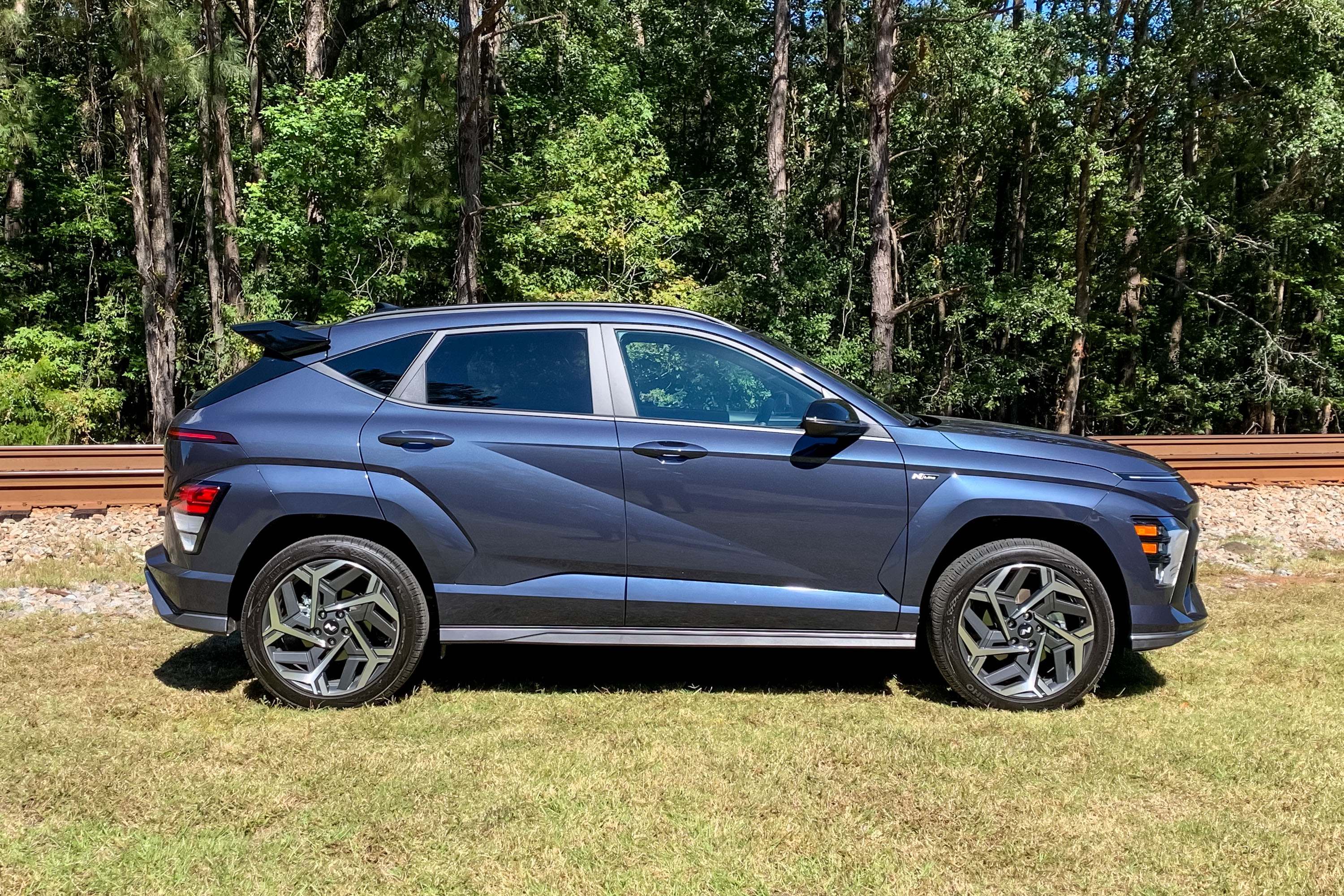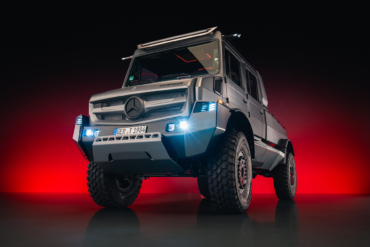The Hyundai Kona Electric won’t set records for range or power. You won’t find one at the top of a mountain, and you probably won’t find fans fighting over its merits on social media.
What the 2024 Hyundai Kona Electric does instead is deliver value and comfort. It plays nearly every card in the electric deck to be smooth, silent, and to just get on with the business of being your daily driver — all while looking like it came from just far enough into the future to be extra cool.
I’m in Victoria, British Columbia, in the dreary cold, to find out more about the latest Hyundai. Let’s dive in.
In short: The 2024 Hyundai Kona Electric is bigger than before and able to hold much more cargo. It’s also much more refined than the model it replaces. But, it’s missing things like a heat pump, and the electric drive system is nearly the same as the first generation. It’s smooth and quiet, but it won’t set range records.
- Engine: Permanent-Magnet Synchronous Electric Motor
- Horsepower: 201 hp (133 hp SE trim)
- Torque: 188 lb.-ft.
- Range: 261 miles (SEL, Limited), 200 miles (SE)
- Cargo: 25.5 cu. ft. with seats up, 63.7 cu. ft. folded
- Towing: N/A
Pros
- Near-silent
- Funky future design
- Loads of standard equipment
- Front-mount charge port
Cons
- No heat pump for cold weather
- Slow L3 charge
- Lackluster range
- No AWD
2024 Hyundai Kona Electric Review
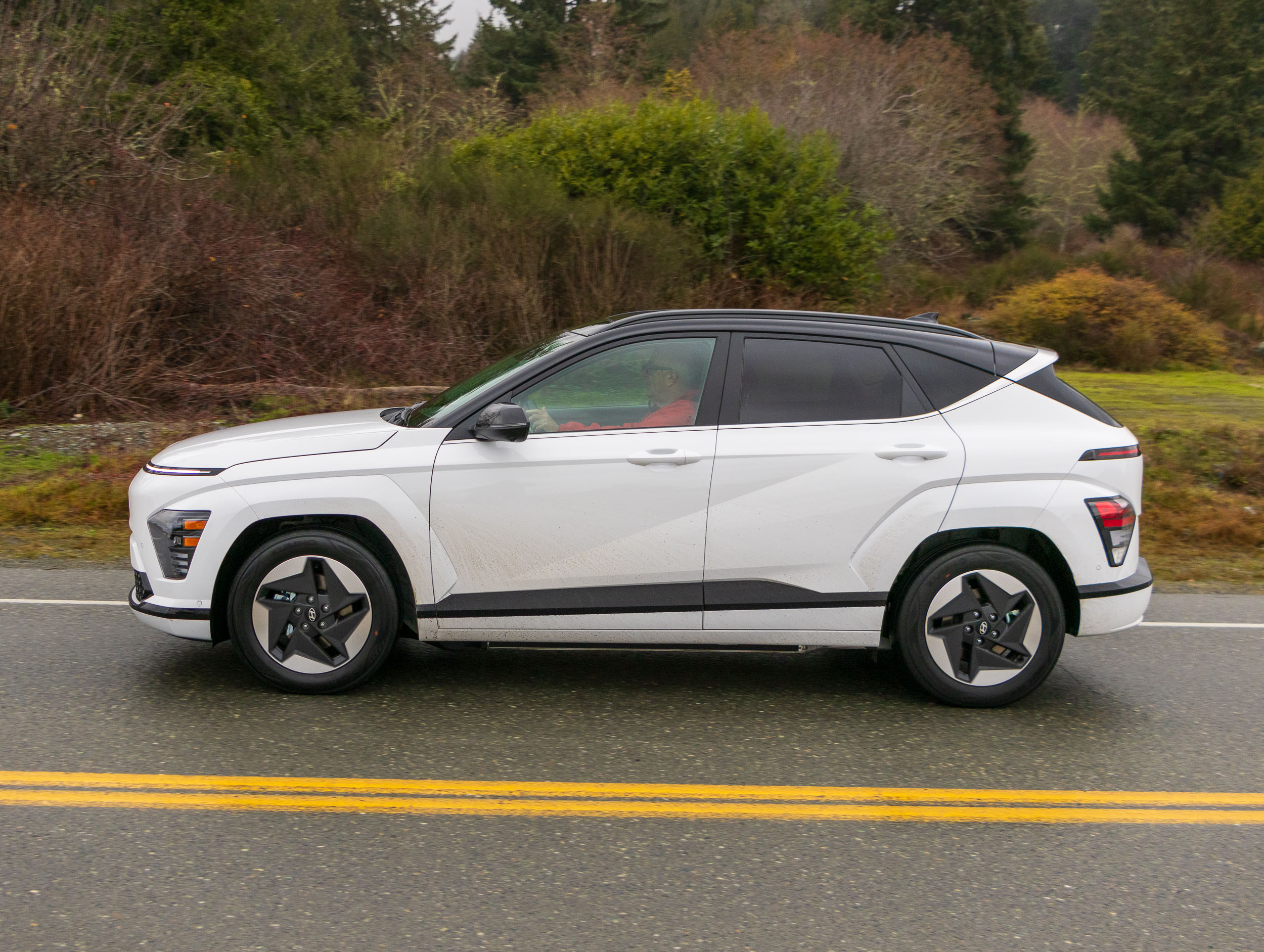
EV First Chassis
The 2024 Hyundai Kona Electric is a completely new chassis. It’s around 6 inches longer and an inch wider than before. More importantly, though, this time it was designed as an EV first and not as a gas model conversion.
Designing the Kona as an EV first means the electrical systems are better integrated. That gives you a flat floor in the back seat, more cargo space, and an experience that is more intentional and less of a compromise than the Kona EV it replaces.
Pixelated Styling for Ioniq Looks
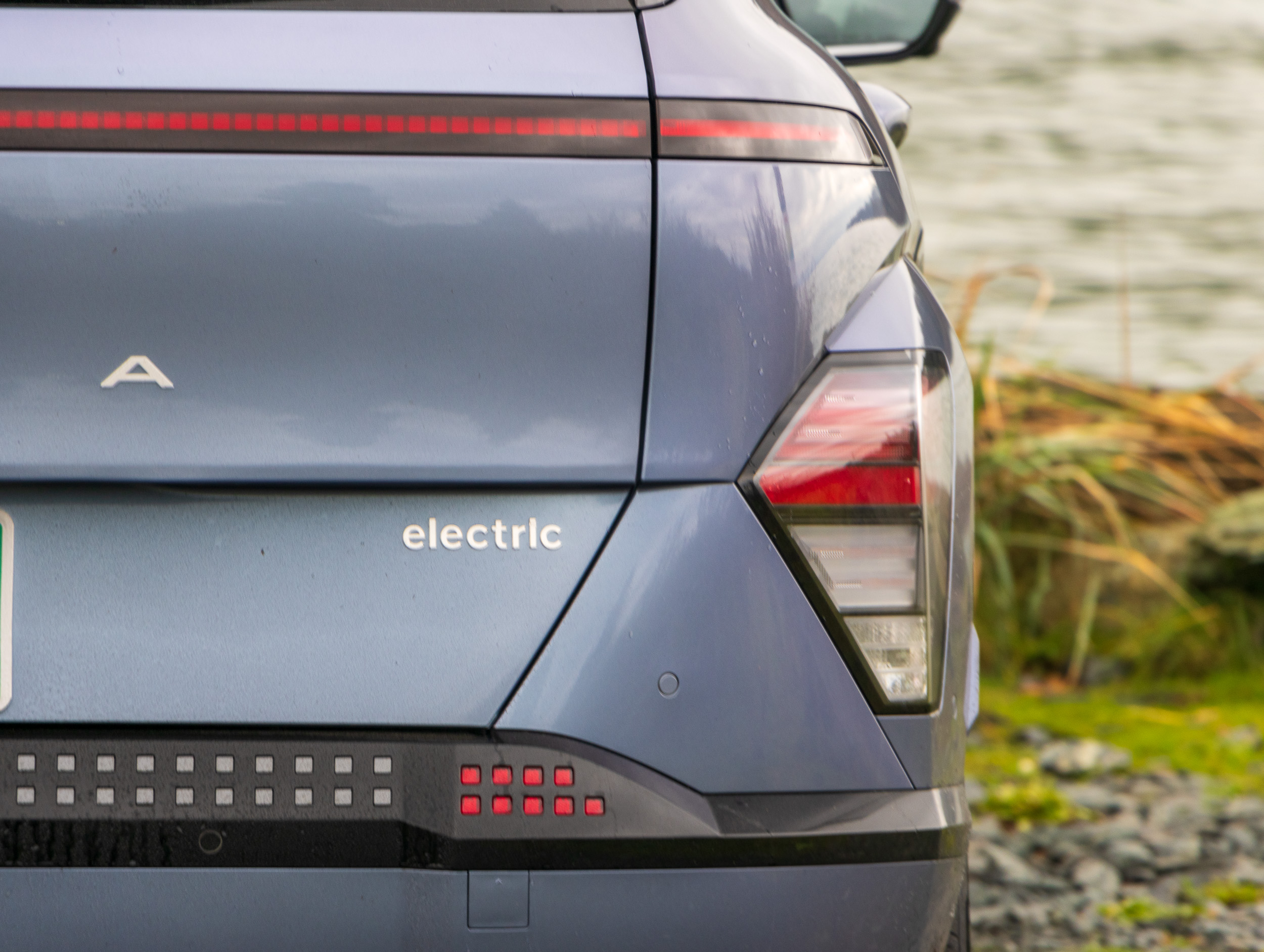
Hyundai’s design studios have been knocking it out of the park for the last half-decade, and the Kona EV is no different. The sharp lines, and slim lights Hyundai calls a “pixelated seamless horizon” all play a part.
To set the EV apart from the gas Kona, Hyundai added even more pixels. The accent lights front and rear have more of them, and so do the lower fascias at both ends. Hyundai also painted the fender arch cladding, so if you see one where the fender flares are body color but the rub strips are gray, you’re looking at the EV. The pixel look helps make the Kona EV look like it’s part of the Ioniq 5 and 6 family of dedicated EVs.
2024 Kona Gets Larger Cabin
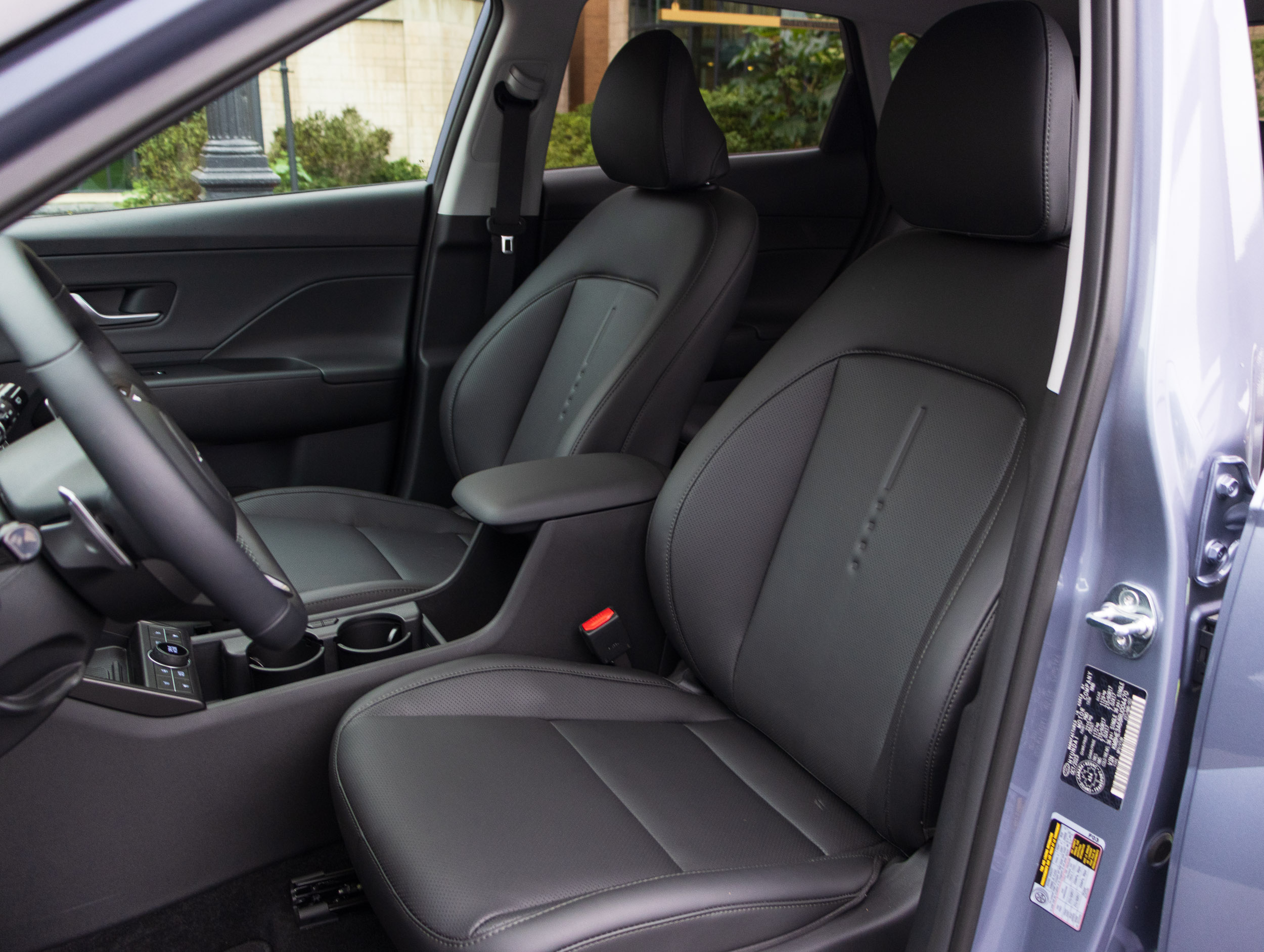
The cabin is only an inch wider, but it feels much more spacious. Dropping the center console plays a part, as does the taller roofline. The flat floor in the back, the longer wheelbase, and thinner front seats add actual space, with rear seat passengers getting 3 inches more room than they had in the previous Kona.
Less Torque Means Better Highway Performance
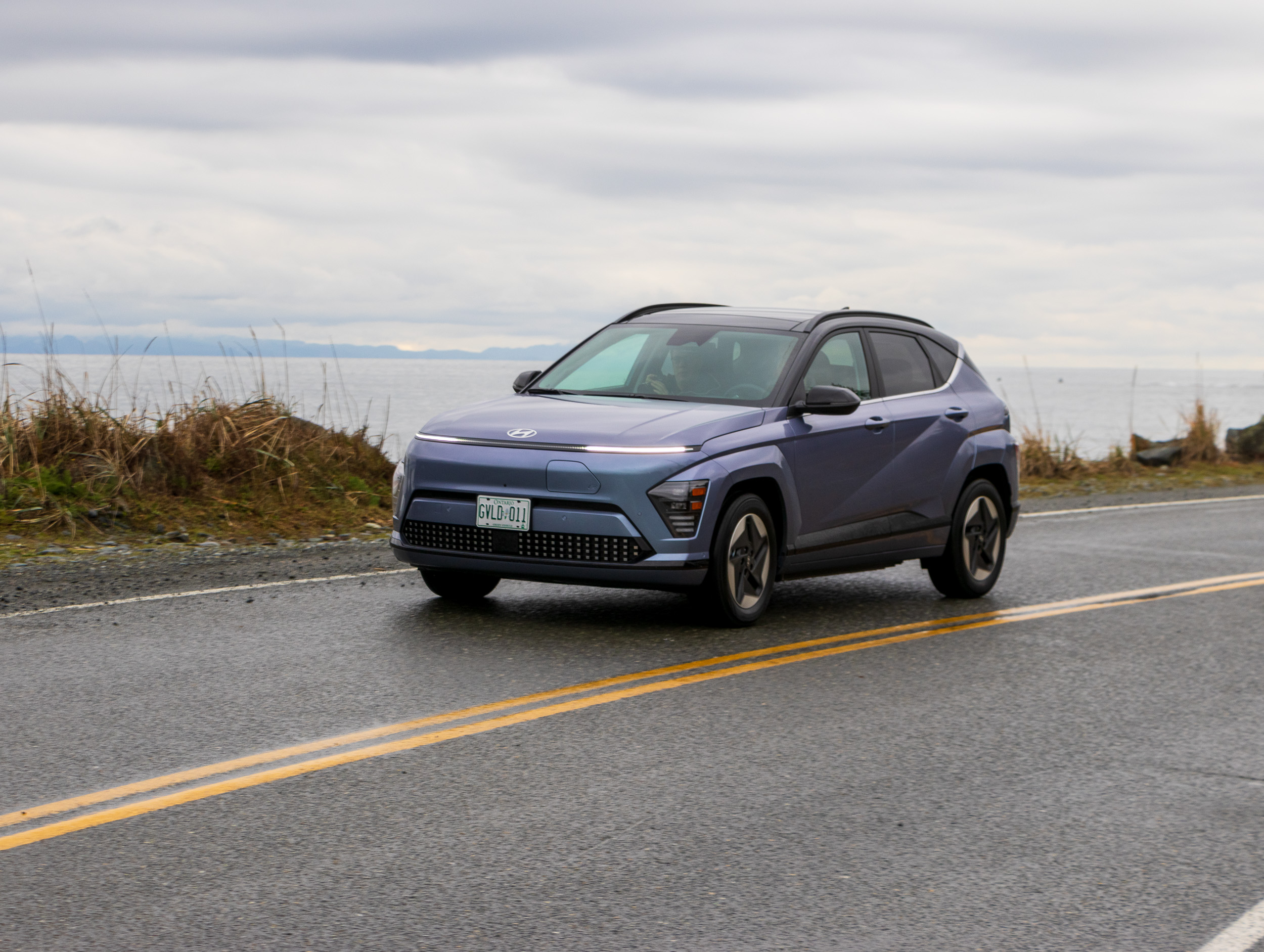
Hyundai used the same 201 horsepower motor that it used in the first Kona Electric, but it did retune the system to make 103 pound-feet less torque. How is that an improvement? Instead of trying to put 291 pound-feet through the front wheels from a stop and having nothing left on the highway, the 2024 Kona’s electric motor makes more torque more of the time.
The new Kona won’t spin its tires from a stop, but it will pull harder when you’re trying to merge on the highway. Or make a quick maneuver in city traffic. It’s not as hectic as the outgoing Kona, but it’s a lot better in the kind of driving you’re probably actually going to use this vehicle for.
Hyundai didn’t change the motor much, and it didn’t change the battery a whole lot, either. The 64.8kWh pack has just 0.8 kWh of extra capacity. Because the Kona grew, that doesn’t do much to increase range. But the 2024 Kona Electric will deliver 261 miles of range, and that’s still a decent figure, if not impressive compared with higher-priced electrics.
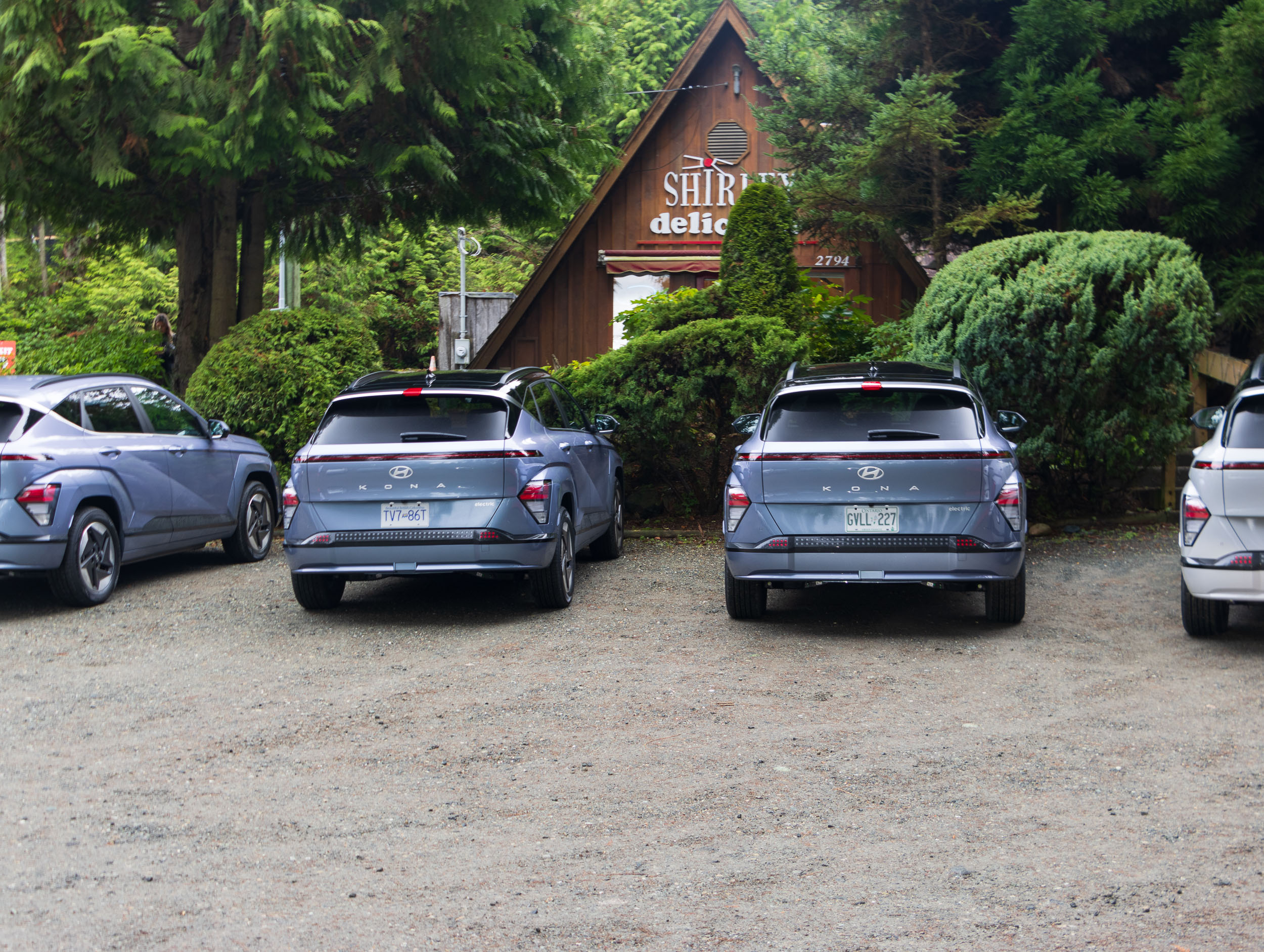
On the road, I saw an indicated 4.1 miles per kWh of consumption. That beats the official city and highway figures, and is more efficient than the last time I drove a last-gen Kona EV.
The Kona can charge at up to 80 kW on a Level 3 fast-charge station, enough to get from 10% to 80% percent in 43 minutes. It’s about 4 minutes quicker than last year, which is not enough to really matter. If you plug into a Level 2 charger, though, which most owners will have at home, you can save some serious time. Kona now charges at 11 kWh with a compatible charge station, cutting 3 hours off of the slower charge.
Shorter Range for Shorter Budgets
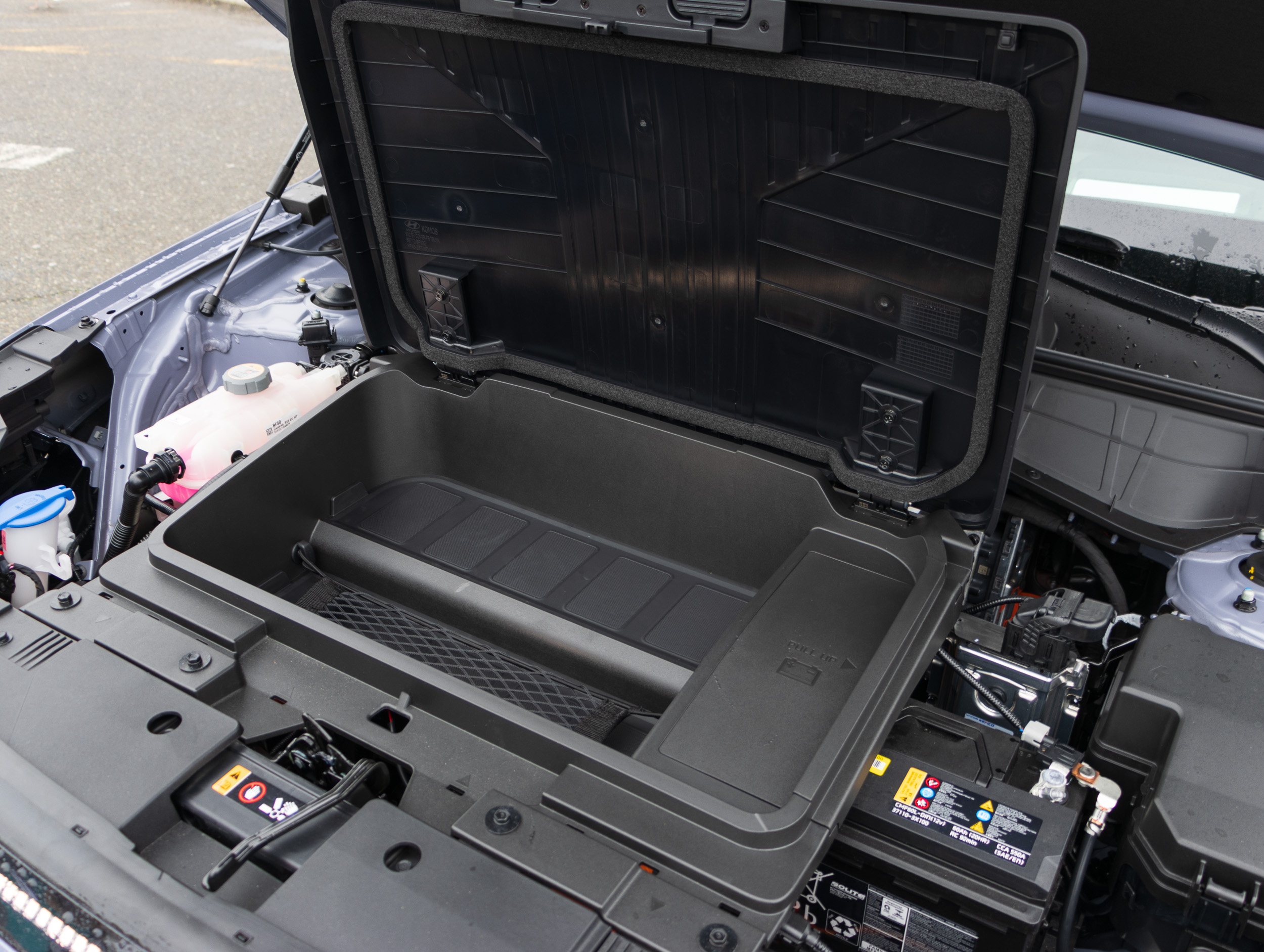
Those are the numbers for the big-motor Kona Electric, at least. Hyundai will also be bringing a 200-mile, 133-horsepower version. The cheaper SE trim will be missing out on a few other goodies like tinted glass and heated front seats, but at $32,675 is one of the lowest-priced EVs on the market. And, it’s $4,000 less than a longer-range SEL.
Spacious New Cabin Get Bigger Screens
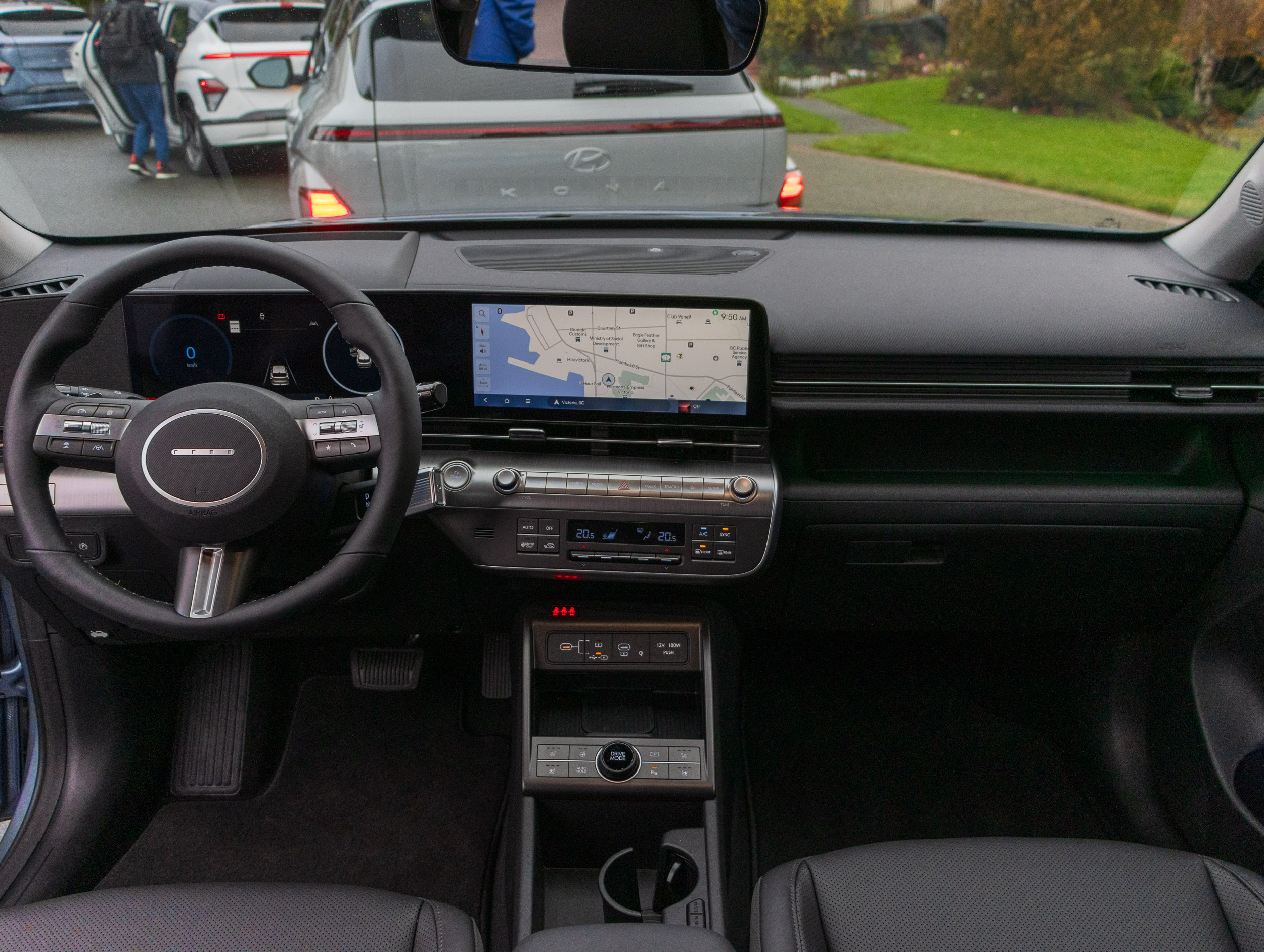
The highlight of the airy new cabin is the two main screens. A pair of 12.3-inch screens have been combined into one bezel. There’s no gauge hood above it, so the look is cleaner and more cohesive. It’s nothing exactly new, Hyundai has done it before in the Tucson and Palisade, but it still looks fresh here.
There is new hardware and software behind the new screens, too. It’s faster to use and supports over-the-air updates. It also looks better and takes full advantage of the real estate offered by the displays.
Wireless Android Auto and Apple CarPlay are both standard. Hyundai has also added its latest digital key function, which lets you open and start your Kona Electric using a smartphone or compatible smartwatch. You can share a virtual key with anyone through the Hyundai app, and control access and access times — like giving someone door access to grab something for you without letting them start the vehicle.
Real Controls Instead of All Touch
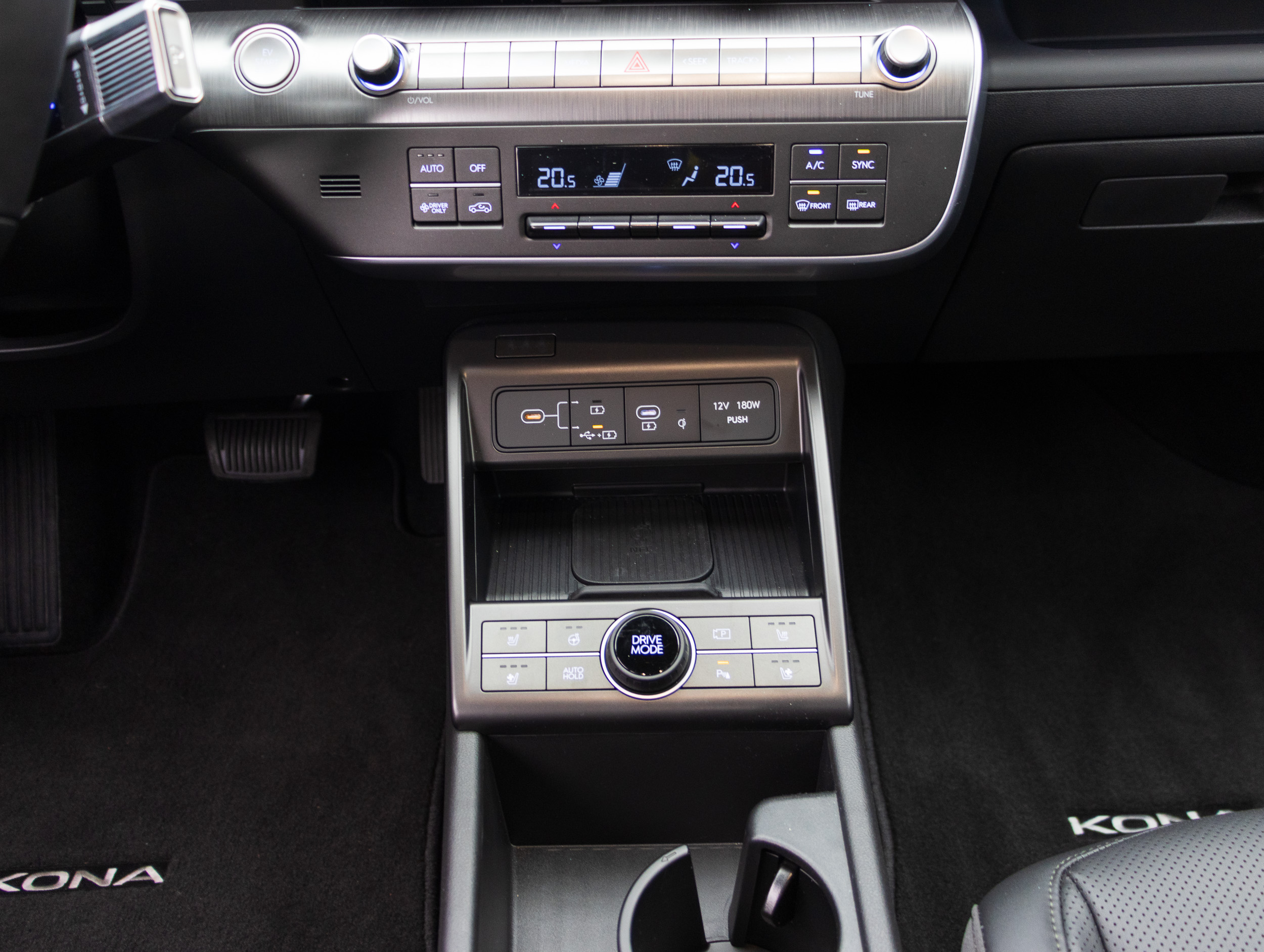
Hyundai hasn’t gone all-in on the screens, though. The climate controls are still real buttons. They’re easy to see and easy to use, and I appreciate that these frequently used controls haven’t been buried in the screen like so many other automakers.
Below the climate controls is another unique touch. Hyundai has added a switch to the driver’s USB-C port to let you pick between charge only or connect and charge. If that sounds silly to you, don’t worry about it. If you’re like me, you think this is an amazing idea, because there are plenty of times when you want the option.
The only oddball control is Hyundai’s gear selector. It’s the same one as the Ioniq 5, where you twist forward for drive and backward for reverse. It should be incredibly intuitive, but for some reason, I’ve never been able to get used to it. Several other reviewers at the event said the same thing.
At least there’s a warning chime if you try to select the direction you’re already in. But just another chime isn’t always enough to stop you from doing the wrong thing.
2024 Hyundai Kona Electric: Smooth and Silent
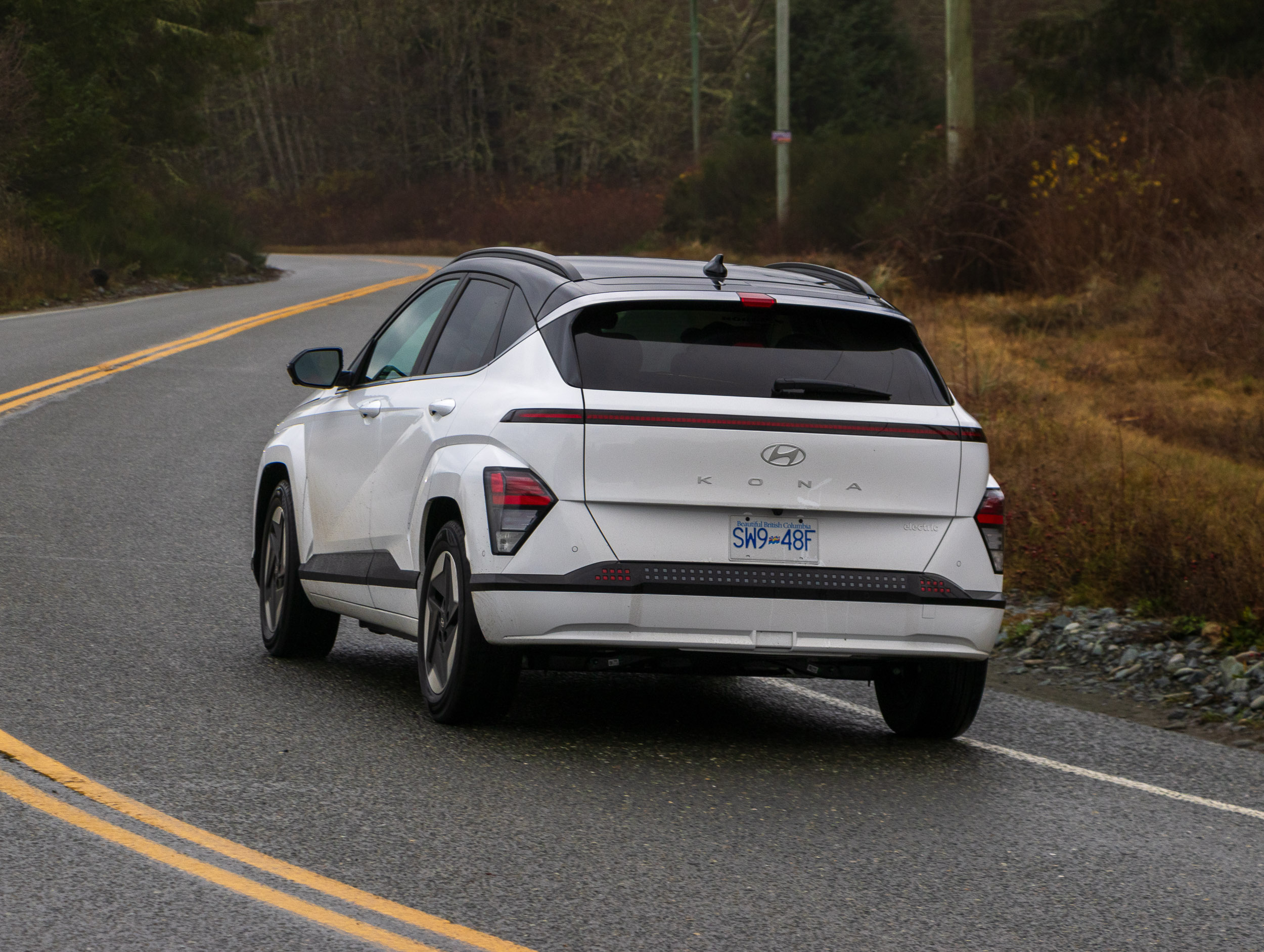
On the road, the Hyundai Kona Electric is far smoother than anything in this size and price class should be. The automaker’s suspension engineers have done a tremendous job of getting rid of the body and suspension heave that is endemic to the mainstream crossover segment.
It softens out the bumps with nary a thump. There is little noise from the suspension on even the worst pavement. The steering is also very isolated from the road. I didn’t experience any vibrations or kickback. But it does have excellent assist weighting, firm enough for the highway and light enough for parking.
Combine the ride and steering with the silent electric powertrain, and you get a small car that’s very easy to drive. There is little wind or road noise, so you’re driving along in a quiet cocoon.
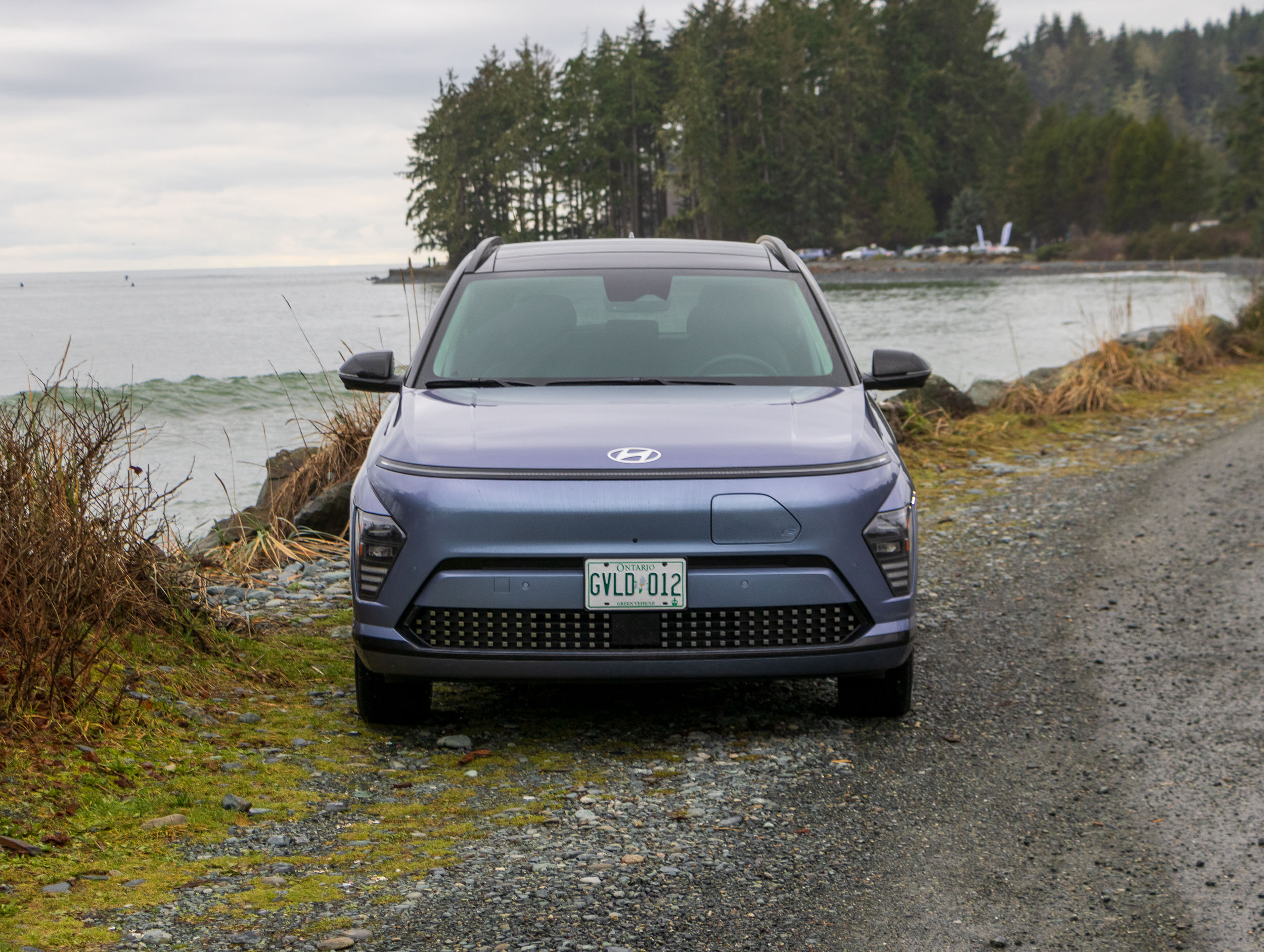
I wasn’t able to take the Kona Electric off-road, but that’s not really the point of this one. It’s front-drive only, unlike the gas model. It has 5.9 inches of ground clearance, which isn’t nothing but isn’t better than most sedans either. You can store 220 pounds of gear on the roof racks, but Hyundai doesn’t give this one a tow rating.
The lack of off-road capability is a bit disappointing. Kona Electric takes advantage of that big battery in a way that could be really handy at a campsite. Vehicle to Load power tech gives you up to 1.7 kW of household power using an adapter that plugs into the charge door on the nose. You can charge an e-bike or just run camp lighting. Or charge another EV if you need to.
Kona Loaded With Safety Content
Hyundai has gone all-out on the driver assists once again. Blind spot collision avoidance, forward collision avoidance, lane keeping, side-view cameras, and even adaptive cruise with lane following are all standard. The only safety features you need a higher spec to get are front and rear parking sensors and the surround-view camera.
2024 Hyundai Kona Electric Review: Conclusions
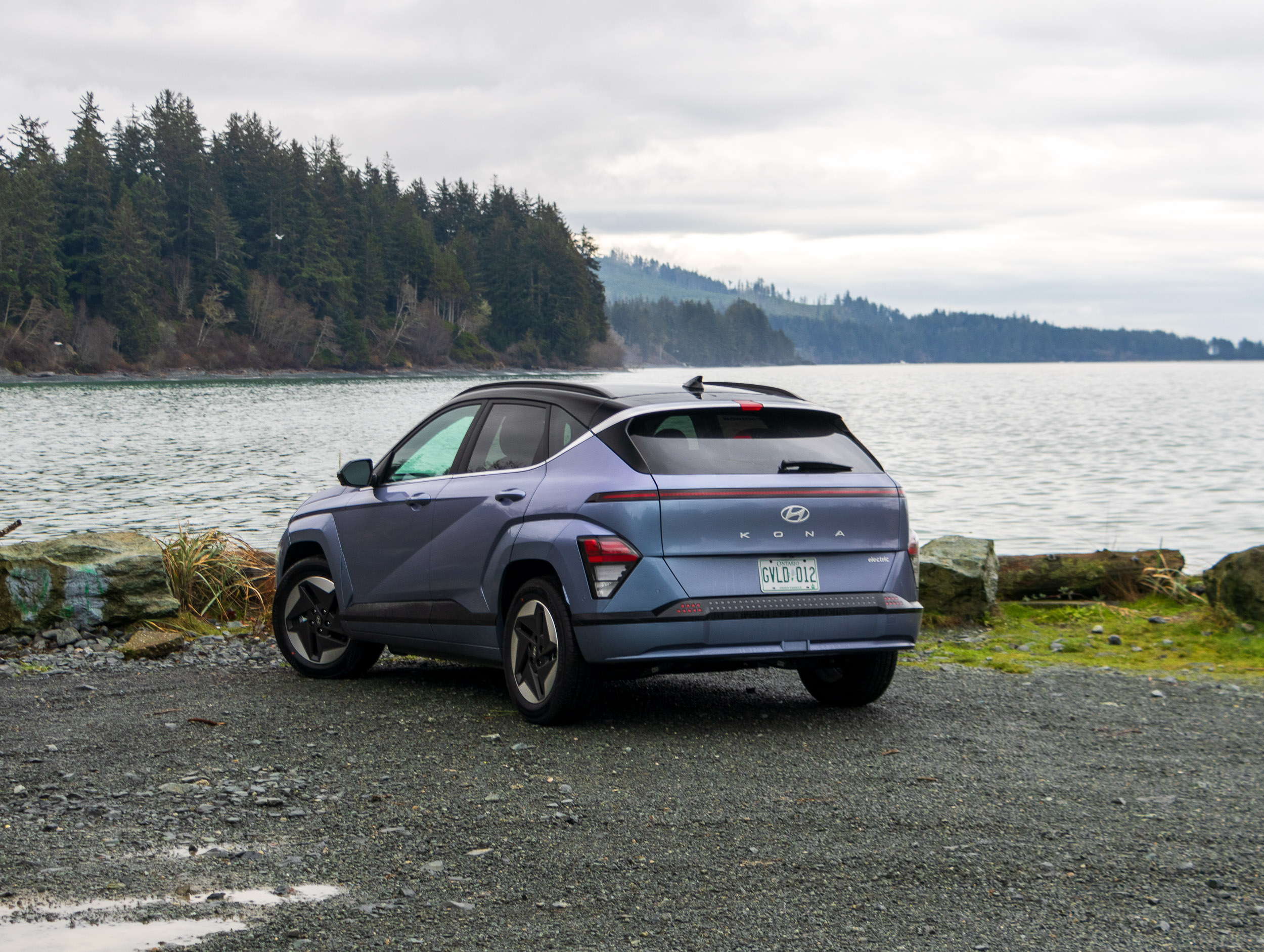
The 2024 Hyundai Kona is a massive upgrade over the model it replaced. It’s only slightly larger outside but has a wealth of extra usable space inside. It’s also much better to drive, feeling far more refined, stable, and comfortable.
Despite all of those upgrades, the new Kona Electric is cheaper. Ignoring the SE model’s new low price because of that smaller battery, SEL and Limited have price cuts of several hundred dollars.
Of course, it isn’t perfect. The Kona Electric is missing a few EV must-haves, like a heat pump for cold-weather driving and high-speed Level 3 charging. It’s also $8,000 more than a gas Kona, and that’s an amount that will buy you a lot of fuel.
